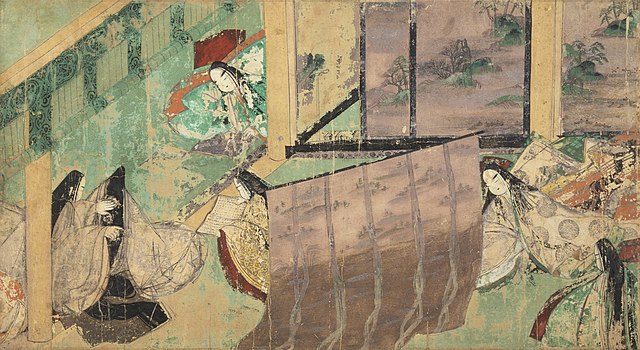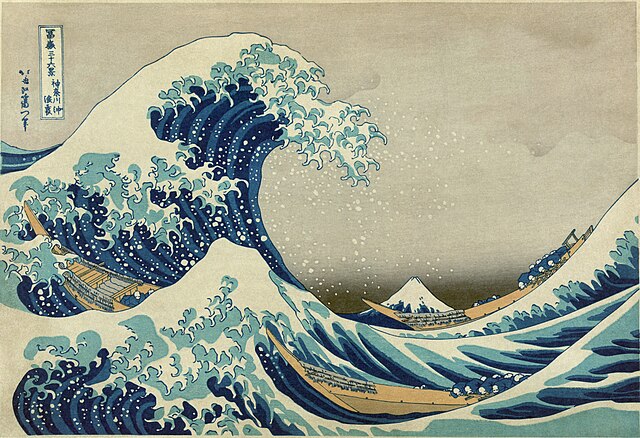Japanese painting is one of the oldest and most highly refined of the Japanese visual arts, encompassing a wide variety of genres and styles. As with the history of Japanese arts in general, the long history of Japanese painting exhibits synthesis and competition between native Japanese aesthetics and the adaptation of imported ideas, mainly from Chinese painting, which was especially influential at a number of points; significant Western influence only comes from the 19th century onwards, beginning at the same time as Japanese art was influencing that of the West.
Set of sliding doors of Frolicking Birds in Plum and Willow Trees by Kanō Sansetsu, 1631, Important Cultural Property
Mural painting from the Takamatsuzuka Tomb. National Treasure.
Panel from The Tale of Genji handscroll (detail). National Treasure.
Siege of Sanjō Palace
Japanese art consists of a wide range of art styles and media that includes ancient pottery, sculpture, ink painting and calligraphy on silk and paper, ukiyo-e paintings and woodblock prints, ceramics, origami, bonsai, and more recently manga and anime. It has a long history, ranging from the beginnings of human habitation in Japan, sometime in the 10th millennium BCE, to the present day.
Woodblock print The Great Wave off Kanagawa by Katsushika Hokusai, Edo period
Scene from the Genji Monogatari Emaki, Heian period, early 12th century (National Treasure)
Middle Jōmon vase; circa 3000-2000 BCE
Jar; middle to late Jomon period; 35th-11th century BCE








